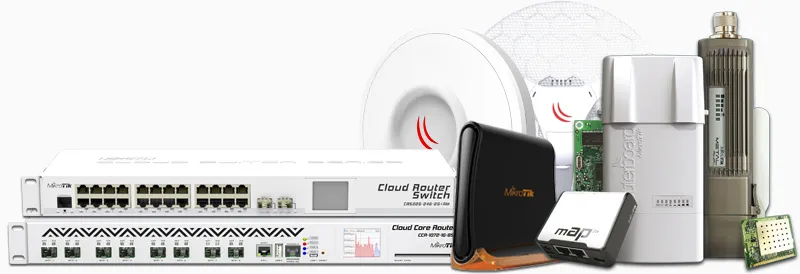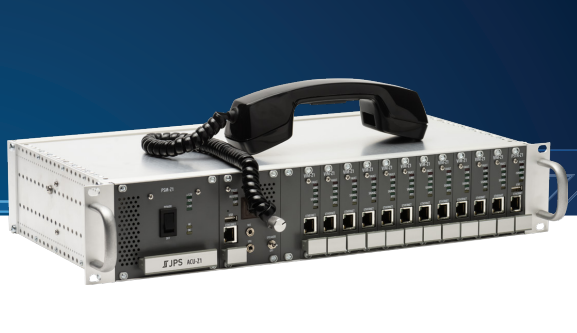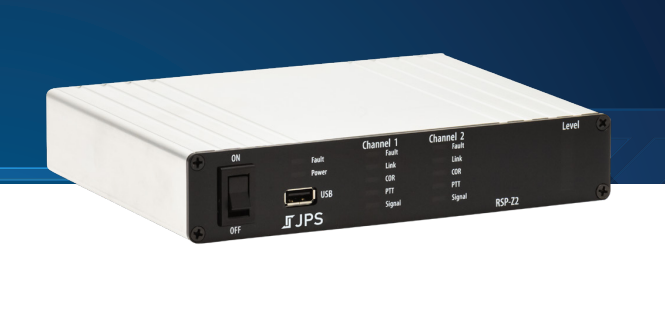mikrotik
military communications
battlefieldnetworks, battlefieldsolutions, combatcommunications, combatnetworks, combatready, combatsystems, defensecomms, defensecontracting, defensecyber, DefenseInnovation, defensemobility, defensenetworking, DefenseSolutions, defensesystems, defensetech, defensetechnology, FieldCommunications, fieldoperations, mikrotik, militaryautomation, militaryC4ISR, militarycloud, militarycommunications, militaryconnectivity, militarydata, militaryedge, militaryengineering, militaryequipment, militarygrade, militaryhardware, militaryinfrastructure, militaryintegration, militaryIOT, militaryIT, militarylogistics, militarynetworks, militaryops, militaryradio, militarysatellite, militarysecurity, militarysurveillance, militarytech, militarywireless, routeros, tacticalanalytics, tacticalcomms, tacticalcomputing, tacticaldeployment, tacticalintelligence, tacticalIT, tacticalnetworking, tacticalops, tacticalrouters, tacticalsurveillance, tacticaltech, tacticalvpn, warfightertech
9M2PJU
0 Comments
MikroTik for Military Tactical Networks
MikroTik is a Latvian company founded in 1996 that has revolutionized affordable networking by combining powerful software (RouterOS) with cost-effective hardware (RouterBOARD). What started as a solution for wireless ISPs has evolved into a comprehensive networking ecosystem used by over 2 million users worldwide.
What Makes MikroTik Unique?
RouterOS is the heart of MikroTik’s offering – a Linux-based network operating system that transforms any compatible x86 PC or MikroTik hardware into a powerful router. Unlike traditional networking vendors who charge separately for features, MikroTik includes everything in a single license:
- 200+ networking protocols (OSPF, BGP, MPLS, VPLS)
- Multiple VPN technologies (IPsec, OpenVPN, WireGuard, SSTP)
- Advanced wireless features (802.11ax, mesh, CAPsMAN controller)
- Comprehensive firewall with Layer 7 filtering
- Traffic shaping and QoS with sophisticated queuing
- Network monitoring tools (SNMP, Netflow, packet capture)
- Scripting engine for automation and custom logic
Key Philosophy: One license, all features included. No artificial limitations or feature paywalls.
MikroTik Product Ecosystem
1. RouterBOARD Hardware Categories
Indoor Routers & Access Points
- hEX series: Entry-level wired routers (5-10 Gigabit ports)
- hAP series: Wireless routers with integrated access points
- Chateau series: High-performance LTE routers with Wi-Fi
- Audience: Advanced LTE router with carrier aggregation
- Cloud Core Router (CCR): Enterprise-grade routing performance
Outdoor & Industrial
- SXT series: Point-to-point wireless links
- LHG series: Long-range directional wireless
- NetMetal: Weatherproof outdoor routers
- wAP series: Outdoor wireless access points
- RB series: Industrial DIN-rail mountable routers
Carrier-Grade Equipment
- CCR2004/2116: 16+ Gbps routing performance
- CRS series: Managed switches with RouterOS
- Cloud Smart Switch (CSS): Pure switching with web management
2. Wireless Technologies
Wi-Fi Standards Support
- 802.11ax (Wi-Fi 6): Up to 1.8 Gbps on hAP ax³
- 802.11ac Wave 2: MU-MIMO support
- 802.11n: 2.4/5 GHz dual-band operation
- Legacy support: 802.11a/b/g for older devices
Proprietary Wireless
- Nv2: MikroTik’s TDMA protocol for point-to-multipoint
- Nstreme: Legacy high-performance protocol
- Wireless Wire: 60 GHz point-to-point links
CAPsMAN (Controlled Access Point system MANager)
- Centralized wireless controller functionality
- Zero-config access point deployment
- Seamless roaming between access points
- Load balancing and band steering
3. Cellular/LTE Integration
Built-in LTE Modems
- Cat 4 LTE: 150 Mbps down / 50 Mbps up
- Cat 6 LTE: 300 Mbps down / 50 Mbps up
- Cat 12 LTE: 600 Mbps down / 150 Mbps up
- 5G support: Available in newer models
Carrier Aggregation
- Combine multiple LTE bands for higher throughput
- Automatic failover between carriers
- Load balancing across multiple SIM cards
Integration Capabilities with Third-Party Systems
1. IP Camera & Video Surveillance Integration
Supported Video Standards
- RTSP streams: Direct integration with IP cameras
- ONVIF compliance: Works with 5,000+ camera models
- H.264/H.265 passthrough: No transcoding overhead
- Multicast streaming: Efficient bandwidth utilization
Compatible NVR Systems
Hikvision, Dahua, Axis, Bosch, Hanwha, Uniview,
Reolink, Amcrest, Lorex, Swann, Ubiquiti UniFi Protect
Network Video Recorder Integration
# VLAN separation for camera traffic
/interface vlan add interface=bridge name=camera-vlan vlan-id=100
/ip address add address=192.168.100.1/24 interface=camera-vlan
# Multicast forwarding for camera streams
/routing igmp-proxy interface add interface=camera-vlan upstream=no
/routing igmp-proxy interface add interface=bridge upstream=yes
2. VoIP & Telephony System Integration
Supported PBX Systems
- Asterisk: Open-source PBX platform
- FreePBX: Web-based Asterisk management
- 3CX: Windows/Linux IP PBX
- Avaya: Enterprise VoIP systems
- Cisco CallManager: Enterprise telephony
- Microsoft Teams: Cloud-based collaboration
SIP Trunking Configuration
# SIP traffic optimization
/ip firewall filter add chain=forward protocol=udp dst-port=5060 action=accept comment="SIP signaling"
/ip firewall filter add chain=forward protocol=udp dst-port=10000-20000 action=accept comment="RTP media"
# QoS for voice traffic
/queue type add name=voip-queue kind=pcq pcq-rate=128k pcq-limit=50
/queue simple add name=voice-priority target=sip-server-ip max-limit=1M/1M priority=1
Radio-over-IP Gateways
- JPS NXU-2A: Analog radio interface
- Omnitronics RediTALK: P25 radio gateway
- Twisted Pair RoIP-102: Two-way radio interface
- Raytheon VIDA: Secure voice interoperability
3. Satellite Communication Integration
Starlink Integration
# Starlink bypass mode configuration
/interface ethernet set ether1 name=starlink-wan
/ip dhcp-client add interface=starlink-wan disabled=no
/ip firewall nat add chain=srcnat out-interface=starlink-wan action=masquerade
# Starlink-specific optimizations
/queue type add name=starlink-queue kind=pcq pcq-rate=100M pcq-limit=50
/ip firewall mangle add chain=forward out-interface=starlink-wan action=mark-packet new-packet-mark=starlink-traffic
VSAT Terminal Compatibility
- Hughes HughesNet: HT2000W, HX series
- Viasat Exede: SurfBeam 2 Pro, Ka-band terminals
- iDirect: Evolution series, Velocity platform
- Gilat: SkyEdge II-c, Capricorn platform
- Newtec: Dialog platform, Mx-DMA
Maritime VSAT Systems
- Inmarsat Fleet Xpress: Global Ka-band service
- KVH TracPhone: Maritime satellite internet
- Intellian: Stabilized maritime antennas
- Cobham SATCOM: Maritime satellite solutions
4. Network Monitoring & Management Integration
SNMP Monitoring Platforms
- PRTG Network Monitor: Windows-based monitoring
- Nagios: Open-source network monitoring
- LibreNMS: PHP/MySQL-based monitoring
- Zabbix: Enterprise monitoring solution
- SolarWinds: Commercial network management
Centralized Configuration Management
- The Dude: MikroTik’s network monitoring tool
- UNMS (Ubiquiti): Works with MikroTik via SNMP
- Oxidized: Configuration backup automation
- Rancid: Network configuration management
Log Management Integration
# Syslog forwarding to SIEM systems
/system logging add topics=info,error,warning action=remote remote=siem-server.domain.com
/system logging add topics=firewall action=remote remote=security-server.domain.com port=514
# SNMP configuration for monitoring
/snmp community set public address=monitoring-server.domain.com
/snmp set enabled=yes contact="Network Admin" location="Field Operations"
5. Security System Integration
Authentication Systems
- RADIUS servers: FreeRADIUS, Microsoft NPS, Cisco ISE
- LDAP/Active Directory: User authentication
- TACACS+: Device administration
- OAuth/SAML: Modern authentication protocols
Network Access Control (NAC)
# 802.1X authentication with RADIUS
/interface wireless security-profiles add name=enterprise-wpa2 mode=dynamic-keys authentication-types=wpa2-eap eap-methods=eap-tls radius-mac-authentication=yes
# MAC address authentication
/interface wireless access-list add interface=wlan1 authentication=yes forwarding=yes mac-address=AA:BB:CC:DD:EE:FF
SIEM Integration
- Splunk: Log analysis and correlation
- IBM QRadar: Security intelligence platform
- ArcSight: HP enterprise security management
- AlienVault OSSIM: Open-source SIEM
6. IoT & Sensor Network Integration
LoRaWAN Gateway Functionality
# LoRa packet forwarding
/interface ethernet add name=lora-interface
/ip address add address=192.168.200.1/24 interface=lora-interface
/ip route add dst-address=sensor-network.domain.com gateway=lora-gateway-ip
Modbus/Industrial Protocol Support
- Modbus TCP: Industrial automation protocol
- BACnet: Building automation networks
- OPC-UA: Industrial communication protocol
- MQTT: IoT messaging protocol
Why MikroTik for Military Applications?
Cost-Effectiveness Revolution
Traditional military networking equipment costs 10-50x more than MikroTik equivalents:
| Capability | Military Grade | MikroTik | Savings |
|---|---|---|---|
| Core Router | $35,000 | $800 | 97.7% |
| Wireless Controller | $15,000 | Included | 100% |
| VPN Concentrator | $12,000 | Included | 100% |
| Managed Switch | $8,000 | $300 | 96.3% |
Technical Advantages for Military Use
Power Efficiency
- 12-57V DC input: Compatible with military power systems
- PoE support: Simplifies field deployment
- Low power consumption: 5-45W depending on model
- Solar/battery friendly: Efficient operation on limited power
Environmental Hardening
- Operating temperature: -40°C to +70°C
- Humidity resistance: Up to 95% non-condensing
- Vibration resistance: Suitable for vehicle mounting
- EMI compliance: Meets CE/FCC standards
Size & Weight
- Compact form factor: Credit card to 1U rack mount
- Lightweight: 50g to 2kg depending on model
- Portable deployment: Fits in standard military packs
Reliability Features
- Dual power inputs: Redundant power supplies
- Hardware watchdog: Automatic recovery from failures
- Flash storage: No moving parts, shock resistant
- MTBF ratings: 100,000+ hours typical
Real-World Military Integration Examples
Case Study 1: Battalion Command Post
Requirements:
- 300 personnel connectivity
- 50 IP surveillance cameras
- VoIP telephony system
- Satellite uplink (VSAT + Starlink backup)
- Secure tunnels to 8 remote outposts
MikroTik Solution:
Core: CCR2004-1G-12S+2XS ($800)
├── VSAT Modem (Hughes HT2000L)
├── Starlink Terminal (backup)
├── IP PBX Server (Asterisk on Linux)
├── NVR System (Milestone XProtect)
└── Access Layer: 4x hAP ax³ ($200 each)
Integration Flow:
- VSAT primary link → MikroTik WAN1
- Starlink backup → MikroTik WAN2
- Automatic failover via Netwatch scripts
- IP cameras → Dedicated VLAN → NVR
- VoIP phones → QoS-prioritized VLAN → PBX
- User devices → Guest network with internet access
Case Study 2: Mobile Convoy Network
Requirements:
- 8 vehicles in convoy formation
- Inter-vehicle mesh networking
- Body camera streaming to command vehicle
- Voice communications between vehicles
- Real-time situational awareness
Per-Vehicle Setup:
Vehicle Router: LtAP LTE6 kit ($350)
├── LTE Cellular Connection
├── Inter-vehicle Wi-Fi mesh (802.11ac)
├── Interior Wi-Fi AP (crew devices)
├── Body camera Wi-Fi connection
└── Vehicle-mounted GPS antenna
Network Architecture:
- Mesh backbone: 5 GHz 802.11ac between vehicles
- Crew access: 2.4 GHz for personal devices
- Camera streaming: Dedicated QoS queue
- Voice priority: Lowest latency routing
- Command vehicle: Aggregates all streams
Case Study 3: Remote Surveillance Outpost
Requirements:
- Perimeter monitoring (16 cameras)
- 25 personnel internet access
- Daily intel report transmission
- Emergency communication capability
- Solar power operation
Equipment Configuration:
Primary: Chateau LTE12 ($450)
├── 4G LTE connection (primary)
├── Satellite backup (Iridium)
├── Solar charge controller interface
├── IP camera PoE switch
└── Interior Wi-Fi coverage
Cameras: 16x Hikvision IP cameras
Power: 800W solar array + battery bank
Backup Comms: Iridium satellite terminal
Step-by-Step Integration Guide
Phase 1: Basic Network Setup
Initial Configuration Template
# System identity and basics
/system identity set name="FIELD-ROUTER-01"
/system clock set time-zone-name=UTC
# Interface configuration
/interface bridge add name=lan-bridge
/interface bridge port add bridge=lan-bridge interface=ether2,ether3,ether4,ether5
# IP addressing
/ip pool add name=lan-pool ranges=192.168.88.10-192.168.88.250
/ip address add address=192.168.88.1/24 interface=lan-bridge
/ip dhcp-server add name=lan-dhcp interface=lan-bridge address-pool=lan-pool
/ip dhcp-server network add address=192.168.88.0/24 gateway=192.168.88.1 dns-server=8.8.8.8,1.1.1.1
# WAN configuration (DHCP client)
/ip dhcp-client add interface=ether1 disabled=no comment="WAN interface"
# Basic firewall
/ip firewall filter add chain=input action=accept connection-state=established,related
/ip firewall filter add chain=input action=accept protocol=icmp
/ip firewall filter add chain=input action=drop in-interface=ether1
/ip firewall nat add chain=srcnat out-interface=ether1 action=masquerade
Phase 2: Advanced Services
VPN Server Setup (WireGuard)
# Generate server keys
/interface wireguard add listen-port=13231 name=wg-server
# Configure server IP
/ip address add address=10.10.10.1/24 interface=wg-server
# Add client peer
/interface wireguard peers add interface=wg-server public-key="[client-public-key]" allowed-address=10.10.10.2/32
# Firewall rules for VPN
/ip firewall filter add chain=input dst-port=13231 protocol=udp action=accept comment="WireGuard"
/ip firewall filter add chain=forward in-interface=wg-server action=accept
/ip firewall filter add chain=forward out-interface=wg-server action=accept
Guest Network Setup
# Create guest VLAN
/interface vlan add interface=lan-bridge name=guest-vlan vlan-id=99
/ip address add address=192.168.99.1/24 interface=guest-vlan
# Guest DHCP
/ip pool add name=guest-pool ranges=192.168.99.10-192.168.99.100
/ip dhcp-server add name=guest-dhcp interface=guest-vlan address-pool=guest-pool
/ip dhcp-server network add address=192.168.99.0/24 gateway=192.168.99.1 dns-server=8.8.8.8
# Guest isolation firewall
/ip firewall filter add chain=forward src-address=192.168.99.0/24 dst-address=192.168.88.0/24 action=drop comment="Block guest to LAN"
/ip firewall nat add chain=srcnat src-address=192.168.99.0/24 out-interface=ether1 action=masquerade
Phase 3: Monitoring & Management
SNMP Configuration
/snmp community set public address=monitoring-server.mil
/snmp set enabled=yes contact="Field IT Team" location="FOB Alpha"
Logging Setup
# Local logging
/system logging add topics=info,error,warning,critical prefix="FIELD-01"
# Remote syslog
/system logging action add name=remote-log target=remote remote=log-server.mil port=514
/system logging add topics=firewall,error,critical action=remote-log
Backup Automation
# Automatic configuration backup
/system script add name=daily-backup source={
/export file=("config-backup-" . [/system clock get date])
/tool e-mail send server=mail.mil [email protected] [email protected] subject="Config Backup" body="Daily configuration backup completed" file=("config-backup-" . [/system clock get date] . ".rsc")
}
/system scheduler add name=backup-schedule on-event=daily-backup interval=1d start-time=02:00:00
Performance Optimization for Military Use
Bandwidth Management
Satellite Link Optimization
# Create traffic classes
/queue type add name=satellite-voice kind=pcq pcq-rate=64k pcq-limit=10
/queue type add name=satellite-video kind=pcq pcq-rate=2M pcq-limit=5
/queue type add name=satellite-data kind=pcq pcq-rate=1M pcq-limit=20
# Apply QoS policies
/queue tree add name=satellite-root parent=global max-limit=10M
/queue tree add name=voice-class parent=satellite-root queue=satellite-voice priority=1 max-limit=512k
/queue tree add name=video-class parent=satellite-root queue=satellite-video priority=2 max-limit=6M
/queue tree add name=data-class parent=satellite-root queue=satellite-data priority=8 max-limit=3M
LTE Optimization
# LTE-specific settings
/interface lte set lte1 band="" # Auto-select best band
/interface lte monitor lte1 once # Check signal quality
# Data usage monitoring
/tool netwatch add host=8.8.8.8 interval=30s comment="Internet connectivity check"
Security Hardening
Access Control
# Admin access restrictions
/ip firewall filter add chain=input src-address=!192.168.88.0/24 dst-port=22,23,80,443,8291 action=drop comment="Block external admin access"
# SSH key authentication only
/ip ssh set strong-crypto=yes
/user ssh-keys import public-key-file=admin-key.pub user=admin
# Disable unnecessary services
/ip service disable telnet,ftp,www
/tool mac-server set allowed-interface-list=none
/tool mac-server mac-winbox set allowed-interface-list=LAN
Intrusion Prevention
# SSH brute force protection
/ip firewall filter add chain=input protocol=tcp dst-port=22 connection-state=new src-address-list=ssh-blacklist action=drop comment="SSH blacklist"
/ip firewall filter add chain=input protocol=tcp dst-port=22 connection-state=new add-src-to-address-list=ssh-attempts address-list-timeout=1h
/ip firewall filter add chain=input protocol=tcp dst-port=22 connection-state=new src-address-list=ssh-attempts connection-limit=3,32 action=add-src-to-address-list address-list=ssh-blacklist address-list-timeout=1d
# Port scan detection
/ip firewall filter add chain=input protocol=tcp psd=21,3s,3,1 action=add-src-to-address-list address-list=port-scanners address-list-timeout=2w comment="Port scanners"
/ip firewall filter add chain=input src-address-list=port-scanners action=drop comment="Drop port scanners"
This comprehensive introduction now properly establishes MikroTik’s background, product ecosystem, and integration capabilities before diving into military applications. Readers will understand what MikroTik is, how it works with other systems, and why it’s suitable for military use before seeing the specific implementations.







Post Comment